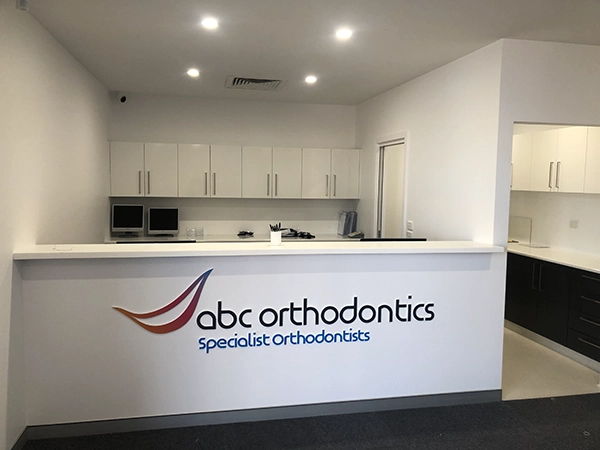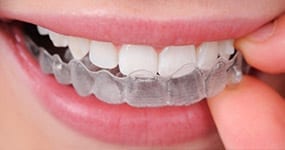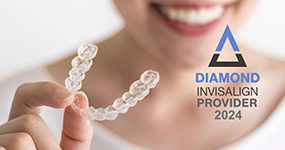Guide to the best age to start orthodontic treatment

We’re often asked about the best age to start orthodontic treatment. Although every child develops at their own rate and therefore age is not the most accurate indicator of orthodontic readiness, it is important to act early when it comes to intervention. That way, your child can avail of quicker treatment with stronger results.
Below, we explain when your child should visit an orthodontist for the first time and why, highlighting the key signs that indicate it is time to book an appointment, as well as the benefits of early treatment.
What is the best age to start orthodontic treatment?
According to the Australian Society of Orthodontists, the ideal age for a child to visit an orthodontist for the first time is between the ages of eight and ten years old. This might seem young, but it’s the perfect opportunity for an orthodontist to assess your child’s teeth, bite and jaws with the aim of flagging any potential issues with development.
It’s important to note that age is not always the most precise benchmark of dental development. What matters most is that most of the child’s baby teeth have been replaced with adult teeth. This process happens slower for some children than others. There are a range of reasons for such delays, which are usually not a cause for concern provided adult teeth eventually grow.
The bottom line? By identifying and intercepting minor concerns before they become serious orthodontic problems, your child can enjoy a healthier and straighter smile with more efficient and cost-effective treatment.
Signs that your child may need early orthodontic treatment
We strongly recommend that every child visits the orthodontist. That said, there are also certain behaviours and features to watch out for, which point to dental development issues that may require orthodontic treatment. These include:
- Thumb sucking and protruding teeth
- Teeth grinding
- Jaw misalignment
- Difficulty chewing or biting
- Breathing through the mouth
- Losing baby teeth very early or lots at once
- Feeling discomfort in the jaw or face
- Overbite or underbite
- Damaged teeth due to trauma
- Crowded teeth
- Disordered sleeping
If you notice your child displaying any of the above signs, early orthodontic treatment can save you considerable time and money. More on these benefits below!
What are the advantages of early orthodontic treatment?
Although many factors are at play when it comes to the health and treatment of your child’s teeth, an early orthodontic evaluation will help to ensure the most efficient and cost-effective orthodontic intervention. Let’s discuss the reasons why.
During the assessment, your orthodontist will take an X-ray of your child’s teeth, bite and jaw to determine how they are likely to develop – your child’s teeth may look straight, but there could be underlying issues not visible to the naked eye, which must be treated before they evolve into something more serious.
After diagnosing any existing concerns, a treatment plan is prepared to address current needs and nip any developmental problems in the bud. As a result, early intervention generally makes for more straightforward and therefore less expensive orthodontic treatment in the long term.
Additionally, early orthodontic treatment makes the most of the fact that your child’s jawbone is still developing and therefore softer than when in later adolescence. As the facial structure is more malleable at a younger age, corrective treatments tend to take effect faster and with less need for invasive techniques.
Lastly, finding a local orthodontist for your child while they are still young helps them to grow familiar with this professional and the experience in general. At ABC Orthodontics, our friendly team will build a trusting relationship with your child that helps to prevent anxiety around future treatment, making visits to the orthodontist’s chair much easier for years to come!
What is the best age to get braces?
The best age to get braces is the point at which your child has developed most of their permanent teeth, which tends to happen between 11 and 14 years of age. Permanent teeth begin to grow at about age six, with the full transition taking approximately five to six years on average. Of course, these estimates will vary from child to child.
If your child needs braces, the best age to begin will depend on the degree of their overbite, underbite or teeth misalignment, as well as the underlying issue.
For example, some children need growth guidance for their lower and/or upper jaw. If braces are worn too late, treatment will be more challenging and time-consuming – or even impossible without invasive surgery. As outlined above, this is because it becomes harder to reposition the jaw and teeth after they have settled into their permanent positions.
On the other hand, if your child gets braces while they still have many of their baby teeth left, it can lead to longer or repeated treatment that could otherwise be avoided.
Of course, it is up to you and your child as to whether and when they get braces, a decision that your orthodontist will be happy to assist with expert insights based on their assessment. To determine whether your child is ready for braces, visit your local orthodontist, who will prepare a personalised treatment plan if needed.
Book your child’s first orthodontic appointment today
Beginning orthodontic treatment at the right time serves as the basis for good oral health and a beautiful smile in later life. With early diagnosis and a proper treatment plan, orthodontic intervention can achieve a greater outcome in less time!
Need to take your child for early orthodontic treatment in Newcastle, NSW? Call ABC Orthodontics today on 1300 794 797 to make an appointment with our friendly team.



